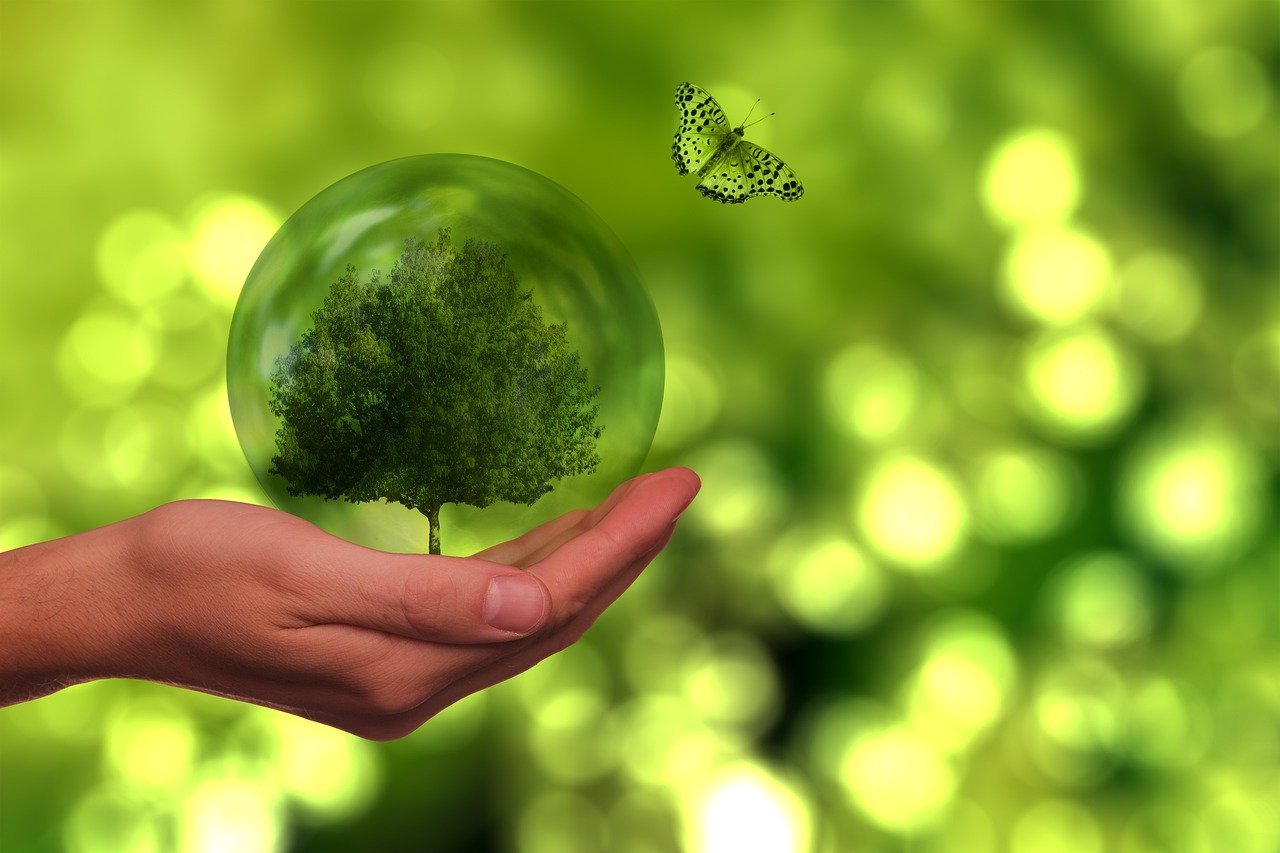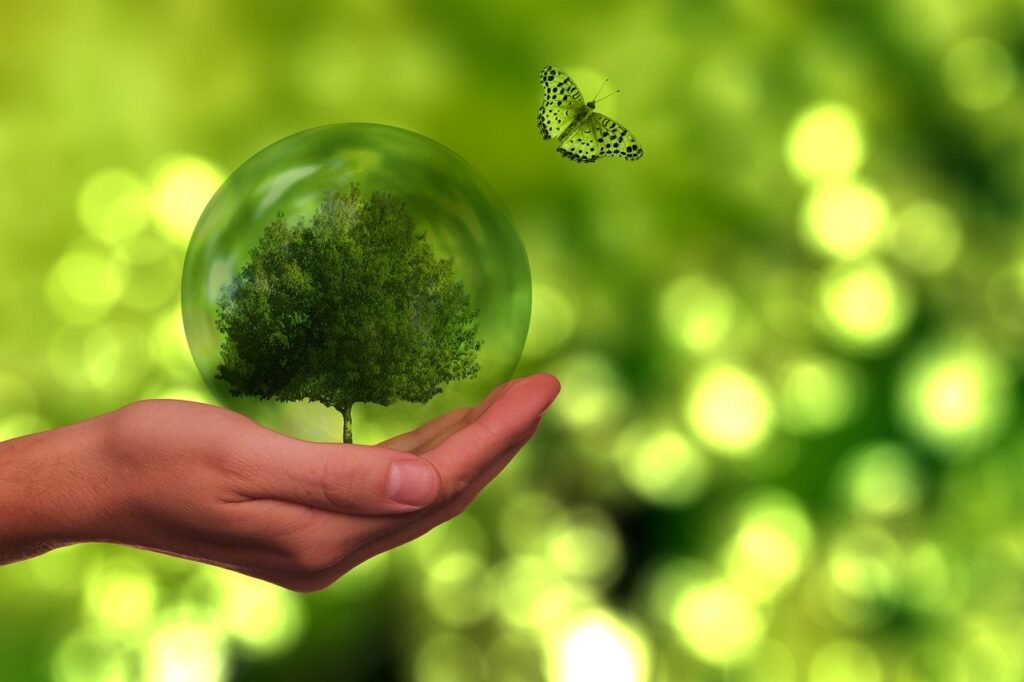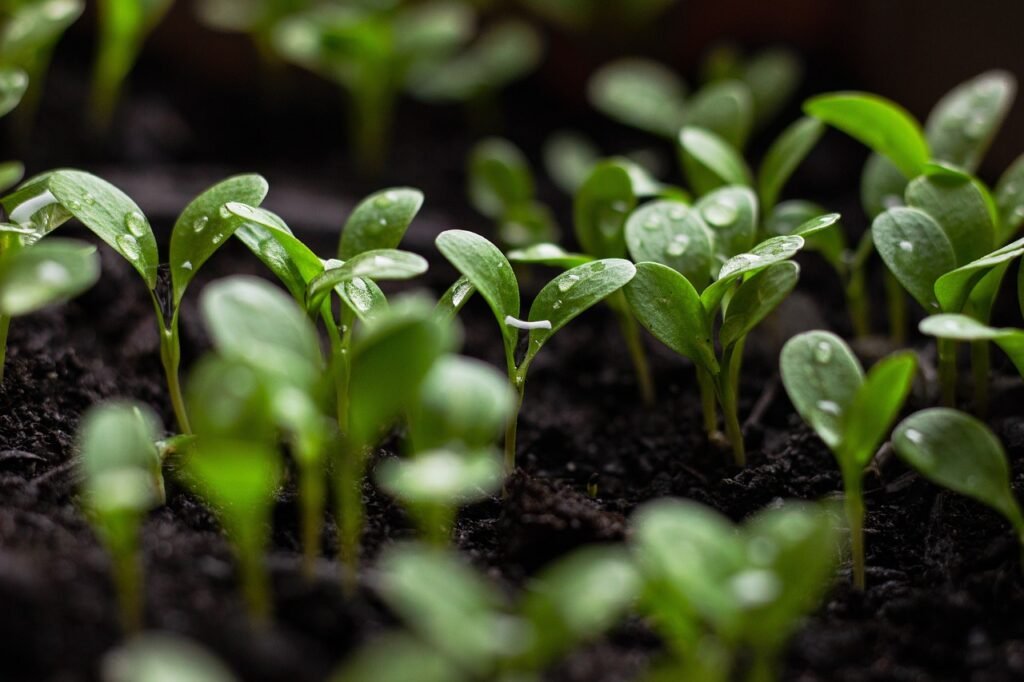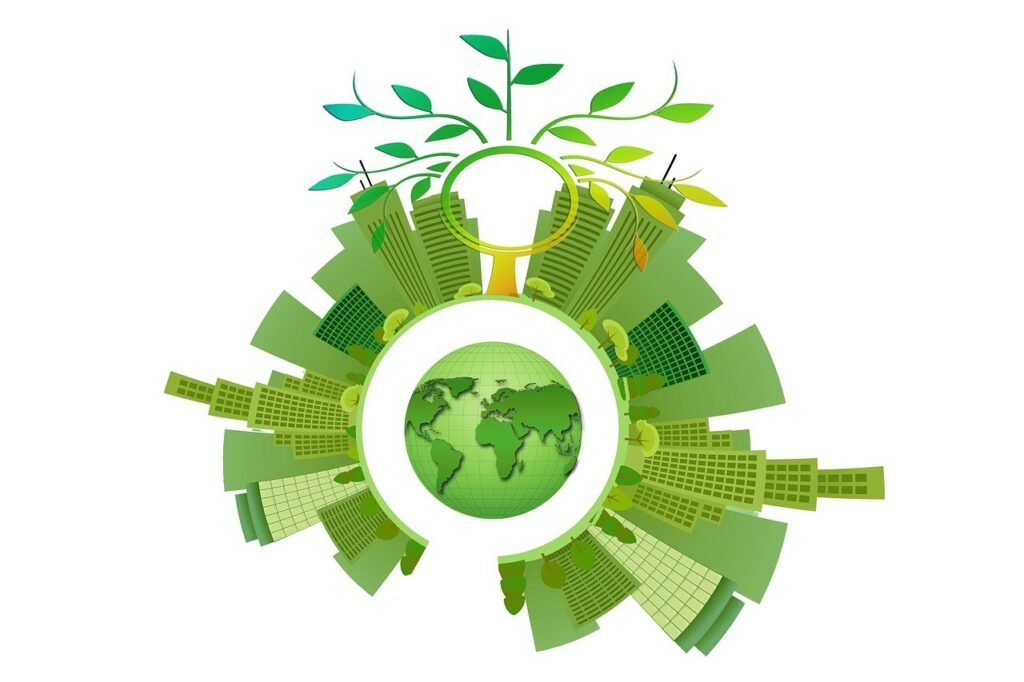
Looking to renovate your bathroom and create a sustainable home? Look no further! In this article, you will discover a variety of eco-friendly bathroom renovation ideas that not only enhance the aesthetics of your space but also minimize your environmental impact. From choosing water-saving fixtures to incorporating natural materials, these thoughtful ideas will transform your bathroom into a sustainable oasis that you can feel good about. So, let’s embark on this green journey together and create a bathroom that is not only beautiful but also environmentally friendly.

This image is property of pixabay.com.
Water-Saving Fixtures
When it comes to creating a more eco-friendly bathroom, one of the first areas to consider is water consumption. By installing water-saving fixtures, you can significantly reduce the amount of water wasted in your bathroom.
Low-flow toilets
Traditional toilets use a large amount of water with every flush, which can be quite wasteful. However, low-flow toilets are designed to use just a fraction of the water while still maintaining their flushing power. These toilets typically use around 1.6 gallons per flush, compared to the 3-5 gallons used by older models. By switching to a low-flow toilet, you can conserve water without sacrificing functionality.
Water-efficient showerheads
Another major source of water waste in the bathroom is the shower. By installing water-efficient showerheads, you can reduce your water consumption without compromising on your shower experience. These showerheads are designed to provide a satisfying water flow while using significantly less water. Look for models that have a flow rate of 2.5 gallons per minute (GPM) or lower to maximize water savings.
Faucet aerators
Faucet aerators are small devices that attach to the end of your faucet. They work by introducing air into the water stream, reducing the amount of water that flows out while maintaining a steady stream. By installing faucet aerators in your bathroom sinks, you can cut down on water usage without impacting the functionality of the faucet. Look for aerators with a flow rate of 1.5 GPM or lower for optimal water savings.
Energy-Efficient Lighting
In addition to water-saving fixtures, energy-efficient lighting is another essential aspect of creating a sustainable bathroom. By switching to energy-efficient lighting options, you can reduce your energy consumption and decrease your carbon footprint.
LED or CFL bulbs
Traditional incandescent light bulbs are inefficient and consume a large amount of energy. By replacing them with LED or CFL (Compact Fluorescent Lamp) bulbs, you can significantly reduce your energy usage. LED bulbs are known for their long lifespan and low energy consumption, making them a great choice for sustainable lighting. CFL bulbs are also highly efficient and have a longer lifespan compared to incandescent bulbs.
Motion sensor lighting
One effective way to save energy in your bathroom is by installing motion sensor lighting. These lights are equipped with sensors that detect movement, automatically turning on when someone enters the room and turning off when no movement is detected after a certain period of time. By using motion sensor lighting in your bathroom, you can ensure that lights are only on when needed, reducing unnecessary energy waste.
Natural lighting options
Leveraging natural light is not only energy-efficient but also adds a refreshing and vibrant ambiance to your bathroom. Consider incorporating windows or skylights into your bathroom design to maximize natural light. Additionally, using translucent or frosted glass in windows and doors can provide privacy while still allowing natural light to illuminate the space.

This image is property of pixabay.com.
Sustainable Flooring
Choosing sustainable flooring materials is both environmentally conscious and aesthetically pleasing. By opting for eco-friendly options, you can minimize the environmental impact of your bathroom renovation while adding a touch of style.
Bamboo flooring
Bamboo is an excellent choice for sustainable flooring in your bathroom. It is a rapidly renewable resource as bamboo plants can reach maturity within just a few years. Bamboo flooring is also durable, moisture-resistant, and easy to maintain, making it a practical choice for bathrooms.
Cork flooring
Cork is another eco-friendly flooring option that is gaining popularity. It is harvested from the bark of cork oak trees, which naturally regenerate after each harvest. Cork flooring is known for its resilience, comfort underfoot, and natural water resistance. It is also a good insulator, helping to keep your bathroom warm and reducing energy consumption.
Recycled tile options
If you prefer the look of tiles in your bathroom, consider using recycled tile options. These tiles are made from recycled materials such as glass, porcelain, or ceramic, reducing the need for new resource extraction. Recycled tiles come in a variety of styles and colors, allowing you to create a unique and sustainable bathroom space.
Eco-Friendly Paint
Painting your bathroom with eco-friendly options is a simple yet effective way to minimize the use of harmful chemicals and reduce your environmental impact.
Low VOC or zero VOC paint
Volatile Organic Compounds (VOCs) are gases released from conventional paints that can have harmful effects on indoor air quality and contribute to air pollution. By choosing low VOC or zero VOC paint, you can minimize your exposure to these chemicals and promote a healthier environment. These paints are made from natural ingredients and have lower levels of VOC emissions.
Eco-friendly wallcoverings
If you want to add texture or pattern to your bathroom walls, consider using eco-friendly wallcoverings instead of traditional wallpaper. Eco-friendly wallcoverings are made from sustainable materials such as bamboo, jute, or grass cloth. They are free from harmful chemicals and provide a natural and stylish alternative to traditional wallpapers.
Choose natural or organic paint
Another option for eco-friendly bathroom painting is to choose natural or organic paint. These paints are made from plant-based ingredients and natural pigments, making them a safer and more sustainable choice. Natural and organic paints are also biodegradable and do not release harmful chemicals into the environment.

This image is property of pixabay.com.
Water-Efficient Faucets
Upgrading your bathroom faucets to water-efficient options can significantly reduce water waste and promote sustainability.
Sensor-based faucets
Sensor-based faucets, also known as touchless faucets, are a great choice for water efficiency. These faucets use motion sensors to detect when your hands are under the faucet and automatically turn the water on. By eliminating the need to manually open and close the faucet, sensor-based faucets can help reduce water waste, especially in situations where the faucet may be left running unintentionally.
Flow restrictors
Installing flow restrictors in your bathroom faucets is a simple and cost-effective way to reduce water usage. These devices limit the maximum flow rate without compromising water pressure, allowing you to achieve the desired water flow while using less water. Flow restrictors can typically reduce faucet water consumption by up to 50%, promoting water conservation.
Upgrade to a WaterSense certified faucet
For the most water-efficient option, consider upgrading your bathroom faucets to WaterSense certified models. WaterSense is a program sponsored by the Environmental Protection Agency (EPA), which identifies and promotes water-efficient products. Faucets with the WaterSense label meet strict performance criteria while using 20% less water than conventional models.
Dual-Flush Toilets
To further reduce water consumption in your bathroom, consider installing a dual-flush toilet. These toilets offer two flushing options, allowing you to select the appropriate amount of water depending on the waste.
Install a dual-flush toilet
Dual-flush toilets have two buttons or levers to control the flushing mechanism. One button is designed for liquid waste, using a smaller amount of water, while the other button provides a full flush option for solid waste. By giving you the ability to choose the appropriate flushing volume, dual-flush toilets can significantly reduce water usage in your bathroom.
Reduced water usage for liquid waste
With a dual-flush toilet, you have the option to use a reduced volume of water when flushing for liquid waste. As liquid waste generally requires less water for removal, being able to choose a lower flush volume saves water and contributes to a more sustainable bathroom.
Full flush option for solid waste
For solid waste, dual-flush toilets offer a full flush option that uses a slightly higher volume of water. This ensures that adequate water is used to remove solid waste effectively while still minimizing the overall water consumption compared to traditional toilets.
Recycled and Upcycled Materials
Incorporating recycled and upcycled materials into your bathroom renovation is not only environmentally friendly but also adds a unique and personalized touch to your space.
Use recycled glass for countertops
Using recycled glass for your bathroom countertops is an excellent way to repurpose discarded materials and reduce the demand for new resources. Recycled glass countertops provide durability and a stunning visual appeal, with the added benefit of being easy to clean and maintain. By choosing recycled glass, you are doing your part in creating a more sustainable bathroom.
Reclaimed wood for vanities
Consider using reclaimed wood for your bathroom vanities instead of new and virgin wood. Reclaimed wood is salvaged from old structures such as barns or factories and given a new life. Using reclaimed wood not only adds character and warmth to your bathroom but also helps protect forests by reducing the need for cutting down trees.
Upcycle old furniture for storage
Instead of purchasing new storage units for your bathroom, consider upcycling old furniture to create unique storage solutions. Old dressers, cabinets, or vintage chests can be repurposed and given a fresh coat of eco-friendly paint to match your bathroom décor. By upcycling furniture, you are reducing landfill waste and adding a touch of creativity to your sustainable bathroom.
Smart Water Management Systems
Integrating smart water management systems into your bathroom can help you monitor and control your water usage more efficiently.
Install a smart shower controller
A smart shower controller allows you to set and monitor your desired shower temperature and duration, ensuring that you don’t waste water or energy. With a mobile app or a control panel, you can customize your shower preferences and receive alerts when you’ve reached your desired temperature or shower time. Smart shower controllers help you conserve water and energy by eliminating unnecessary shower usage.
Smart leak detection and prevention
Water leaks not only waste precious water resources but also contribute to higher utility bills. By installing smart leak detection and prevention systems in your bathroom, you can detect leaks early on and prevent them from causing further damage. These systems use sensors and smart technology to monitor water flow and alert you when an abnormality is detected. By addressing leaks promptly, you can minimize water waste and reduce the risk of water damage.
Automated water usage monitoring
Smart water usage monitoring systems provide real-time data on your water consumption, helping you identify areas where you can save water. These systems typically consist of sensors installed on faucets, showers, and toilets, which track water usage and transmit the data to a central hub or mobile app. By analyzing your water usage patterns, you can make informed decisions about water conservation and adjust your habits accordingly.
Green Cleaning Products
Cleaning your bathroom with eco-friendly and non-toxic products is not only healthier for you and your family but also better for the environment.
Use eco-friendly and non-toxic cleaning agents
Conventional cleaning products often contain harsh chemicals that can be harmful to both human health and the environment. By using eco-friendly and non-toxic cleaning agents, you can effectively clean your bathroom without exposing yourself or the planet to harmful chemicals. Look for cleaning products that are labeled as biodegradable, plant-based, and free from synthetic fragrances and dyes.
Choose biodegradable and plant-based options
Biodegradable and plant-based cleaning products are designed to break down quickly and safely in the environment, minimizing their impact on ecosystems. These products are typically made from renewable resources and do not release harmful toxins when used or disposed of. By opting for biodegradable and plant-based options, you can keep your bathroom clean while reducing your carbon footprint.
Avoid harsh chemicals and artificial fragrances
Many conventional cleaning products contain harsh chemicals such as chlorine, ammonia, and phthalates, which can linger in the air and negatively impact indoor air quality. Additionally, artificial fragrances found in some cleaning products can contribute to indoor air pollution. By choosing cleaning products that are free from these harmful ingredients, you can create a healthier and more sustainable bathroom environment.
Water Harvesting Systems
Implementing water harvesting systems in your bathroom can help you reduce your reliance on the municipal water supply and make the most of available water resources.
Install a rainwater harvesting system
One way to utilize rainwater is by installing a rainwater harvesting system in your bathroom. These systems collect rainwater from your roof and direct it to a storage tank or cistern. This harvested rainwater can then be used for tasks such as flushing toilets, watering plants, or cleaning. By harvesting rainwater, you not only reduce your reliance on the municipal water supply but also conserve water and lower your utility bills.
Reuse greywater for irrigation
Greywater refers to the relatively clean wastewater generated from activities such as bathing, handwashing, or laundry. By installing a greywater recycling system, you can collect and treat this water for reuse. Greywater can be used for landscape irrigation or toilet flushing, reducing the demand for fresh water. Implementing a greywater recycling system in your bathroom can significantly decrease your water usage and contribute to a more sustainable home.
Reduce reliance on municipal water supply
By combining water-saving fixtures, smart water management systems, and water-harvesting technologies, you can reduce your overall reliance on the municipal water supply. This not only helps to conserve water resources but also reduces the strain on local water infrastructure. By taking steps to become more self-sufficient in water usage, you are actively contributing to a more sustainable and resilient bathroom and home.
In conclusion, an eco-friendly bathroom renovation involves considering various aspects such as water-saving fixtures, energy-efficient lighting, sustainable flooring, eco-friendly paint, water-efficient faucets, dual-flush toilets, recycled/upcycled materials, smart water management systems, green cleaning products, and water harvesting systems. By incorporating these elements into your bathroom design, you can create a sustainable and environmentally friendly space that not only reduces your carbon footprint but also enhances the overall well-being of your home.

